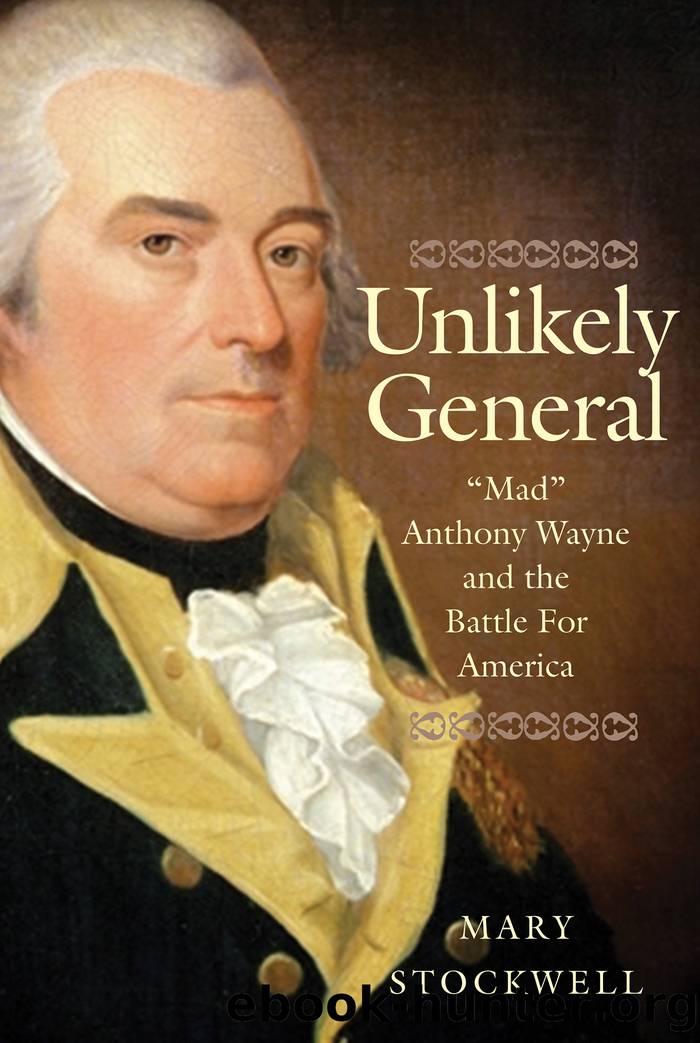Unlikely General by Mary Stockwell

Author:Mary Stockwell
Language: eng
Format: epub
Publisher: Yale University Press
Published: 2018-10-15T00:00:00+00:00
General Clintonâs map of Wayneâs Ohio campaign. William L. Clements Library, University of Michigan.
Wayne would have preferred to fight the tribes in the spring. Then the warriors were weak. They had traveled far from their villages in search of game. Leaving their families in makeshift camps, they hunted for weeks on end in the frozen woods. The most terrible time for the Indians came in February. Known among the northern tribes as the Hunger Moon, the days were filled with snow, ice, and starvation. Wayne was certain that the best time to strike the Indians was just a few weeks later as spring approached. In late March and early April, the warriors were exhausted, tired from hunting all winter and more concerned about getting their families back safely to their villages than fighting. Then his soldiers could move swiftly against the Indians, with the horses and cattle finding plentiful fodder in the meadows that dotted the country all the way north to the Miami of the Lakes.3
As much as he regretted the timing, there could be no turning back for Wayne or his Legion. Even as he waited through the late summer of 1793 for news on the treaty negotiations, he had continued to prepare his men for battle. Relying on the authority granted to him as the Legionâs commander in chief, he reorganized the sublegions to function more like Continental Army divisions. Each one now had a staff of officers, First and Second Battalions of infantry, a Third Battalion of riflemen, and separate units of dragoons, light infantry, and artillery. At seven oâclock every Sunday morning, Wayne ordered his sublegions to form on the parade ground with their daily rations prepared in advance. They then spent the day marching in columns, throwing up redoubts in record time, and fighting in mock battles. Wayne also drilled his soldiers in recognizing the signals of the drum and bugle corps: prepare to march, march, quicken the march, halt, form for action, call in the infantry, call in the rifle corps, commence firing, cease firing. His men had to respond immediately to these signals, for their lives would soon depend on it. Despite the near constant pain of gout, Wayne sat on his horse all day, directing his soldiers from early in the morning until late in the afternoon.4
As he watched his men maneuver before him, Wayne worried that he had trained them in only fifteen months. His own experience taught him that men needed three years to become soldiers. It took them that long to learn how to care for their weapons and uniforms, and also how to live off their rations. But Wayne had never been able to calculate how many years it took a soldier to be ready for actual combat. Instead he could only hope his men were fully trained for battle. Still he fretted that all the knowledge he had poured into them had come from his fighting the British, not the Indians. No matter how brutal the late war had been, combat against the redcoats had been orderly.
Download
This site does not store any files on its server. We only index and link to content provided by other sites. Please contact the content providers to delete copyright contents if any and email us, we'll remove relevant links or contents immediately.
Fanny Burney by Claire Harman(26530)
Empire of the Sikhs by Patwant Singh(22980)
Out of India by Michael Foss(16792)
Leonardo da Vinci by Walter Isaacson(13189)
Small Great Things by Jodi Picoult(7024)
The Six Wives Of Henry VIII (WOMEN IN HISTORY) by Fraser Antonia(5400)
The Wind in My Hair by Masih Alinejad(5034)
A Higher Loyalty: Truth, Lies, and Leadership by James Comey(4851)
The Lonely City by Olivia Laing(4751)
The Crown by Robert Lacey(4731)
Millionaire: The Philanderer, Gambler, and Duelist Who Invented Modern Finance by Janet Gleeson(4386)
The Iron Duke by The Iron Duke(4294)
Papillon (English) by Henri Charrière(4199)
Sticky Fingers by Joe Hagan(4106)
Joan of Arc by Mary Gordon(4022)
Alive: The Story of the Andes Survivors by Piers Paul Read(3970)
Stalin by Stephen Kotkin(3883)
Aleister Crowley: The Biography by Tobias Churton(3589)
Ants Among Elephants by Sujatha Gidla(3417)
